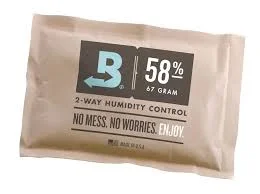Introduction
If you’ve ever struggled with excess humidity or product spoilage, you’re not alone. That’s where hygropack comes in—a small but mighty moisture-absorbing solution used in various industries to extend shelf life and maintain quality.
Whether you’re in pharmaceuticals, food packaging, or electronics, hygropacks offer an efficient and low-cost way to control moisture and prevent damage. This guide will help you understand how they work, their key benefits, how to use them, and tips to get the most out of your investment.
Benefits of Hygropack
How It Helps in Moisture Control
A hygropack is a desiccant-based packet designed to absorb excess humidity within a closed environment. It typically contains silica gel, clay, or molecular sieve materials, all known for their superior moisture-trapping abilities.
Here’s how it helps:
- Protects contents from mold, corrosion, and degradation
- Improves shelf life of products in storage or transit
- Maintains product integrity for sensitive items like medications, electronics, or food
By absorbing water vapor, a hygropack ensures a dry microenvironment, critical for preserving product quality.
Key Advantages for Different Industries
Each industry benefits from hygropacks differently:
- Pharmaceuticals: Protects capsules and tablets from moisture-induced spoilage.
- Food Packaging: Prevents the growth of mold and bacteria.
- Electronics: Shields sensitive components from humidity-related damage.
- Leather and Textiles: Maintains texture and prevents mildew.
Key takeaway: Using hygropacks is an affordable yet effective method to boost product safety and customer satisfaction.
How to Use/Apply Hygropack
Step-by-Step Guide
Applying a hygropack is straightforward but requires attention to detail:
- Choose the right size based on package volume and humidity exposure.
- Place the hygropack inside the packaging before sealing it.
- Ensure airtight sealing for maximum effectiveness.
- Store in a dry, cool environment before application.
Tip: Always check the hygropack’s capacity (in grams) to match the moisture absorption required.
Common Mistakes to Avoid
Many users unintentionally reduce the effectiveness of their hygropacks. Here are the most common pitfalls:
- Incorrect size selection – Using a too-small pack results in insufficient absorption.
- Improper storage – Exposing unused hygropacks to air activates them prematurely.
- Loose sealing – Air leakage can quickly saturate the hygropack.
- Reusing non-rechargeable packs – Most are single-use unless stated otherwise.
Avoiding these mistakes can significantly improve performance and longevity.
Best Practices for Hygropack
Tips & Tricks for Better Results
Here’s how you can ensure optimal results from your hygropack:
- Use indicator cards to monitor humidity levels inside the package.
- Combine with vacuum sealing for delicate products.
- For long-term storage, double-layer packaging can provide extra protection.
- Always rotate stock based on the First-In-First-Out (FIFO) system to avoid expiration.
Expert Recommendations
Industry experts suggest the following for safe and efficient use:
- Validate pack sizes through lab testing in high-humidity environments.
- Use ISO-certified hygropacks for regulated industries like pharma and electronics.
- Train staff on proper handling and application.
- Incorporate hygropacks into your quality assurance process.
Pro Tip: Leading desiccant manufacturers like Clariant and Multisorb offer tools to help calculate desiccant requirements accurately.
FAQs About Hygropack
Answer Common Questions
Q1: What is the lifespan of a hygropack?
A: Most hygropacks last between 6 months to 2 years, depending on storage conditions and packaging integrity.
Q2: Can I reuse a hygropack?
A: Unless specified as rechargeable (e.g., via microwave or oven drying), most are single-use only.
Q3: Are hygropacks safe for food use?
A: Yes, food-grade hygropacks are made with FDA-approved materials and are non-toxic when used as directed.
Q4: Do hygropacks work in all climates?
A: While effective globally, performance may vary based on ambient temperature and humidity levels.
Q5: How do I know if my hygropack is saturated?
A: Some come with color-changing indicators, or you can use separate humidity cards to check moisture levels.
Conclusion
To wrap up, hygropacks are a simple, reliable solution for moisture control across various industries. Whether you’re protecting sensitive electronics or keeping pharmaceuticals safe, using the right hygropack can save you time, money, and customer complaints.


